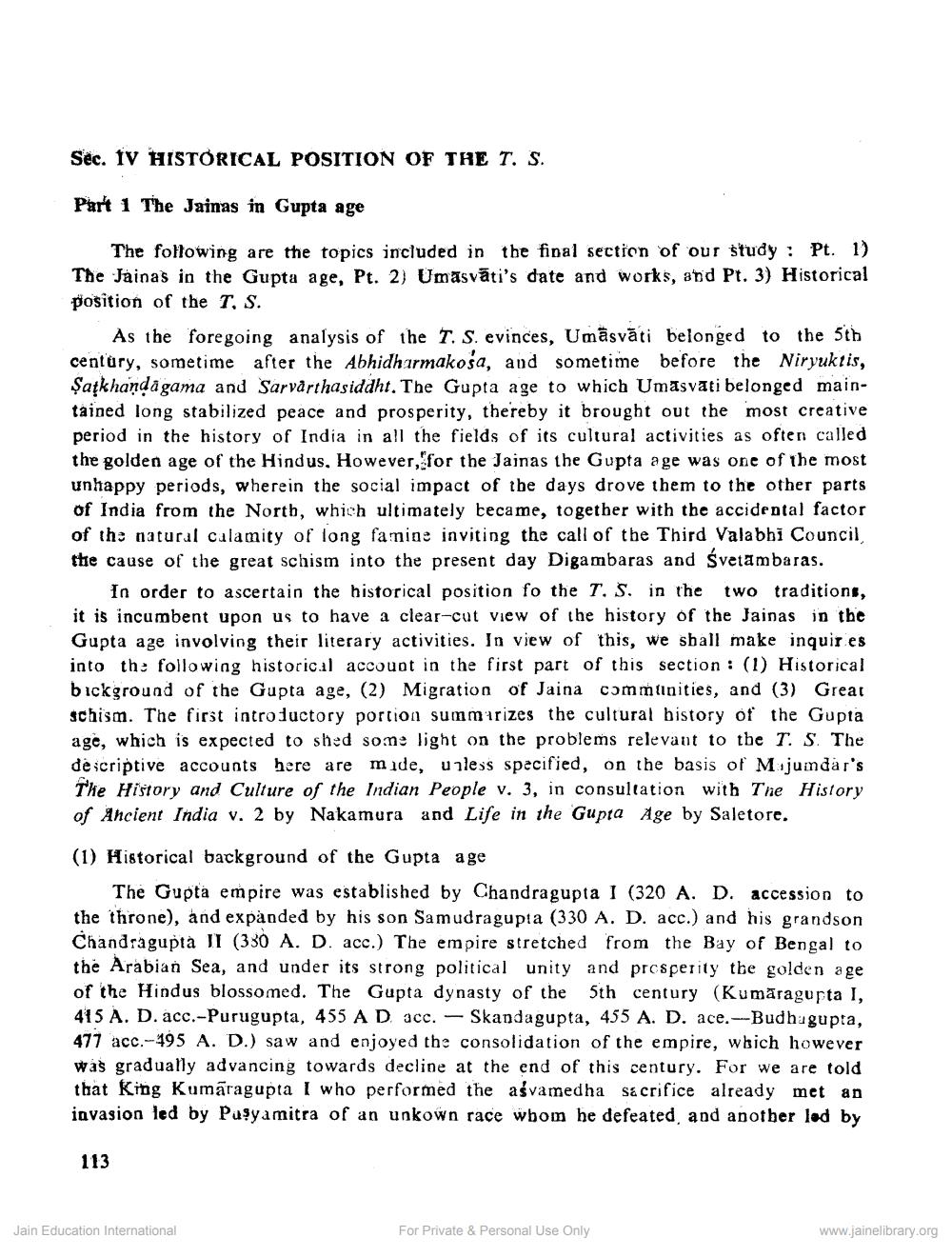________________
Sec. IV HISTORICAL POSITION OF THE T. S.
Part 1 The Jainas in Gupta age
The following are the topics included in the final section of our study: Pt. 1) The Jainas in the Gupta age, Pt. 2) Umāsvāti's date and works, and Pt. 3) Historical position of the T, S.
As the foregoing analysis of the T. S. evinces, Umāsvāti belonged to the 5th century, sometime after the Abhidharmakośa, and sometime before the Niryukris, Şatkhandā gama and Sarvårthasiddht. The Gupta age to which Umasvati belonged maintained long stabilized peace and prosperity, thereby it brought out the most creative period in the history of India in all the fields of its cultural activities as often called the golden age of the Hindus. However, for the Jainas the Gupta age was one of the most unhappy periods, wherein the social impact of the days drove them to the other parts of India from the North, which ultimately became, together with the accidental factor of the natural calamity of long famine inviting the call of the Third Valabbi Council the cause of the great schism into the present day Digambaras and svetambaras.
In order to ascertain the historical position fo the T. S. in the two traditions, it is incumbent upon us to have a clear-cut view of the history of the Jainas in the Gupta age involving their literary activities. In view of this, we shall make inquir es into the following historical accouot in the first part of this section : (1) Historical bickground of the Gupta age, (2) Migration of Jaina communities, and (3) Great schism. The first introductory portion summarizes the cultural bistory of the Gupta age, which is expected to shed some light on the problems relevant to the T. S. The descriptive accounts here are made, unless specified, on the basis of Majumdar's The History and Culture of the Indian People v. 3, in consultation with The History of Ancient India v. 2 by Nakamura and Life in the Gupta Age by Saletore.
(1) Historical background of the Gupta age
The Gupta empire was established by Chandragupta I (320 A. D. accession to the throne), and expanded by his son Samudragupta (330 A. D. acc.) and his grandson Chandragupta II (330 A. D. acc.) The empire stretched from the Bay of Bengal to the Arabian Sea, and under its strong political unity and prosperity the golden age of the Hindus blossomed. The Gupta dynasty of the 5th century (Kumāragupta I, 415 A. D. acc.-Purugupta, 455 A D. acc. - Skandagupta, 455 A. D. ace. --Budhagupta, 477 acc.-495 A. D.) saw and enjoyed the consolidation of the empire, which however was gradually advancing towards decline at the end of this century. For we are told that King Kumāragupta I who performed the aśvamedha sacrifice already met an invasion led by Pasyamitra of an unkown race wbom he defeated, and another lod by
113
Jain Education International
For Private & Personal Use Only
www.jainelibrary.org




